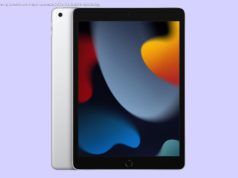HMD Global touts the Nokia 7.1 as an affordable flagship, and looking at it you might actually think it is. But is it actually a premium phone for $350, or is its beauty skin deep? This is our review.
We haven’t heard the term « affordable flagship » used for a Nokia smartphone since the somewhat disappointing Lumia 830, but HMD Global is hoping to give that title a new meaning with the Nokia 7.1. The internal hardware isn’t exactly flagship level for 2019, but overall the phone feels pretty solid, and it offers a good experience for its price point.
The phone comes in two variations for storage and RAM, one has 3GB of RAM and 32GB of storage, and the other has 4GB of RAM and 64GB of storage. Price also varies by country, even within Europe. I reviewed the 3GB/32GB model, which costs €359 in Portugal.
HMD Global’s Nokia phones aren’t exactly flashy, but they tend to have a timeless design, in my opinion, with just enough flair to make them a little more appealing. The Nokia 7.1 is no exception, and I truly love the simplistic look accented by silver edges around the metal frame and the camera module on the back. Even the power button and volume rocker have accented edges and they contrast beautifully against the dark blue body of the phone.
On the back, you’ll find the dual camera module which protrudes significantly from the body of the phone. Even with a case, I’ve found that the camera bump touches whatever surface I put the phone on, so you’ll want to be wary of small grains of sand or other debris that might scratch the glass. Right under that is the round fingerprint scanner, which is in a pretty comfortable position for my hands.
Around the edges, you’ll find a headphone jack and a built-in mic on the top end, the right side houses the power button and volume rocker, and the left side has the tray that houses both the SIM card and microSD storage, should you want it. At the bottom you’ll find the single speaker in this phone, along with a USB Type-C charging port and another microphone.
On the front, of course, you’ll find the 5.84-inch Full HD+ display in the 19:9 aspect ratio, which means the actual resolution is 2280×1080. This is what you’ d probably expect on a phone at this price, and I’d consider it flagship-level. I’ve always believed that Quad HD doesn’t offer enough benefits on a screen this size to justify the price increase or the battery drain, so Full HD is exactly what I’d prefer.
Besides, this display is pretty great. Granted, I’m coming from a relatively low-end phone, but for an LCD, the Nokia 7.1 provides some beautiful colors with great contrast, and overall it’s just a pleasure to look at. It supports HDR, which is a pretty welcome feature on a phone at this price, and it even has an SDR to HDR converter to help provide some more contrast to SDR photos and videos. You can turn this on or off in the settings, but to be quite frank, I couldn’t really tell the difference between having it on or off. It’s a great looking display either way and I really have no complaints.
At Mobile World Congress earlier this week, I learned that this is actually the result of a video processing chip from Pixelworks. It’s a specialized chipset that’s designed to provide better color accuracy, HDR, and overall better quality imaging, even on phones with cheaper displays, like the Nokia 7.1. I sat down with the company at MWC to learn more about it, and seeing the same video playing on the 7.1 side-by-side with an iPhone Xs was very surprising. Despite having an LCD – while the iPhone uses an OLED display – the colors on the Nokia phone looked much more vibrant.
While the screen pushes pretty far to the side and top edges, there’s a big bezel at the bottom of the phone housing the Nokia logo, and a notch up top. Now, neither of these actually bother me very much. Unlike what seems to be the majority, I actually like the look of the notch and I love the way images wrap around it, but you can disable it in the settings if you feel differently. It’s not a ridiculously tall notch like the one on the Pixel 3 XL, and it’s also not too wide, so I’m happy with it. For videos, the phone will default to fit the whole frame of the video in the display, so it actually won’t get in the way unless you watch content recorded in the 18:9 format, which some YouTube channels have started doing.
Home
United States
USA — software Nokia 7.1 review: Top-notch display, great design, and an almost premium experience






